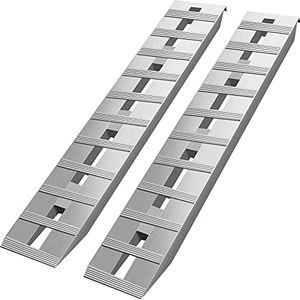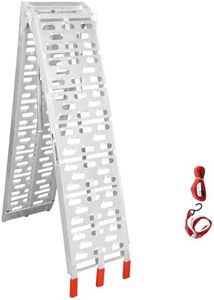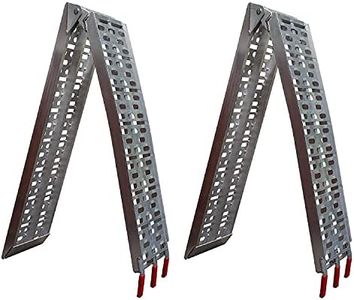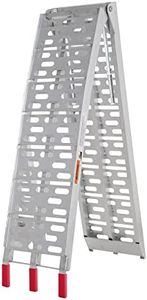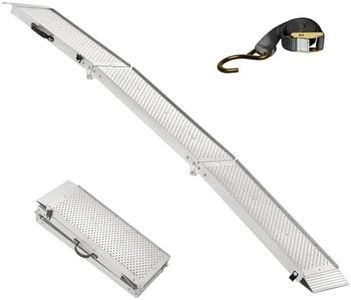We Use CookiesWe use cookies to enhance the security, performance,
functionality and for analytical and promotional activities. By continuing to browse this site you
are agreeing to our privacy policy
10 Best Atv Loading Ramps
From leading brands and best sellers available on the web.Buying Guide for the Best Atv Loading Ramps
Choosing the right ATV loading ramp is important for ensuring both your safety and the protection of your vehicle and equipment. Before buying, consider not only what type of ATV you have, but also where and how often you'll use the ramp. Think about how you'll transport and store the ramp when it's not in use. Making the right choice will save you time, effort, and prevent possible accidents during loading and unloading.Weight CapacityWeight capacity refers to the maximum amount of weight the ramp can safely support. This is critical because using a ramp below your ATV's combined weight (including any cargo or liquid in the tank) can cause accidents or damage. Weight capacities are usually listed in pounds. Lighter-duty ramps typically support around 500-800 lbs, while heavy-duty options can cope with over 1500 lbs. If you have a small ATV or just plan to load light, less capacity may be fine. However, for larger ATVs or if you want flexibility for future use, a higher weight limit is safer. Always check your ATV's weight and ensure the ramp is rated for more than that total.
Length and InclineThe length of the ramp determines how steep the incline will be when loading your ATV. Longer ramps create a gentler slope, which makes loading much easier and safer, especially if your truck or trailer bed is high off the ground. Ramps are usually between 6 to 10 feet in length. Short ramps are more portable but result in a steeper angle, which can be challenging to climb and risky in wet or muddy conditions. If you frequently load onto tall vehicles, choose a longer ramp. Always check the required ramp length for your vehicle's height to maintain a safe loading angle.
Ramp Width and Track TypeWidth refers to how wide the ramp (or pair of ramps) is, and it should match your ATV's wheelbase. There are single wide ramps and dual runners (two narrow ramps for each wheel). Wider ramps offer more room and stability but may be bulkier when transporting. Narrow runners are more compact but require precise alignment. Measure your ATV’s wheel width and select ramps that are at least as wide as needed for a secure fit. Think about what feels safer and more comfortable for you—some prefer the extra security of a single wide ramp, while others prefer the flexibility and portability of dual runners.
Material and Build QualityThe ramp’s material affects both its strength and weight. Aluminum ramps are common because they’re lightweight, rust-resistant, and often strong enough for most ATVs. Steel ramps tend to be heavier but can support more weight. Quality matters: look for solid welds, sturdy construction, and non-slip surfaces. If you’ll be handling the ramp alone, or loading/unloading frequently, lightweight aluminum is easier to move around. If maximum strength matters most or the ramp will stay mostly in one location, steel might be the better option.
Folding and PortabilityFolding ramps are designed to be more compact and portable for easy transport and storage. There are bi-fold, tri-fold, and straight (non-folding) versions. Folding ramps are easier to fit in your vehicle when not in use, while non-folding models may offer extra strength or stability but take up more space. Think about where you’ll store the ramp, how far you need to carry it, and how much space you have in your vehicle. If you’re on the go often or have limited storage, folding ramps are more convenient.
Attachment and Safety FeaturesSecure attachment points such as straps, safety chains, or rubber-coated fingers are designed to keep the ramp in place during loading and unloading. These are very important for preventing slips or movement that could lead to accidents. Look for ramps with sturdy, easy-to-use safety attachments. If you’re frequently loading alone or in less controlled environments, prioritize ramps with reliable and simple safety features, as your safety relies on the ramp staying securely put.
